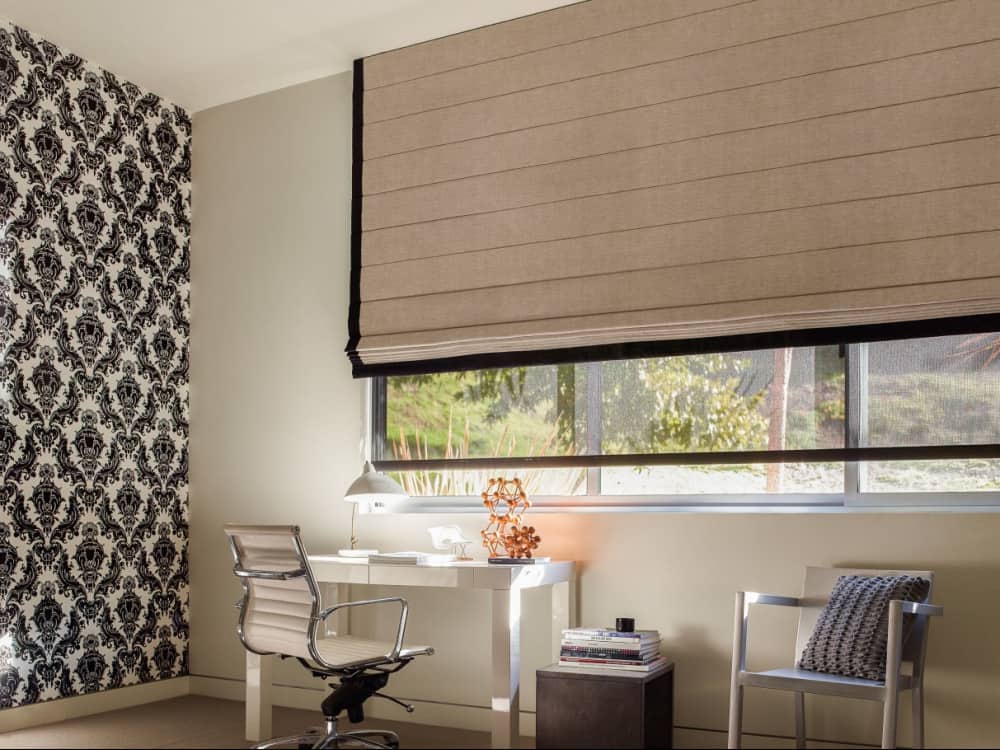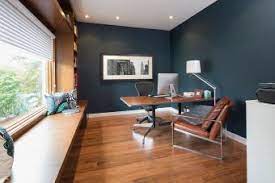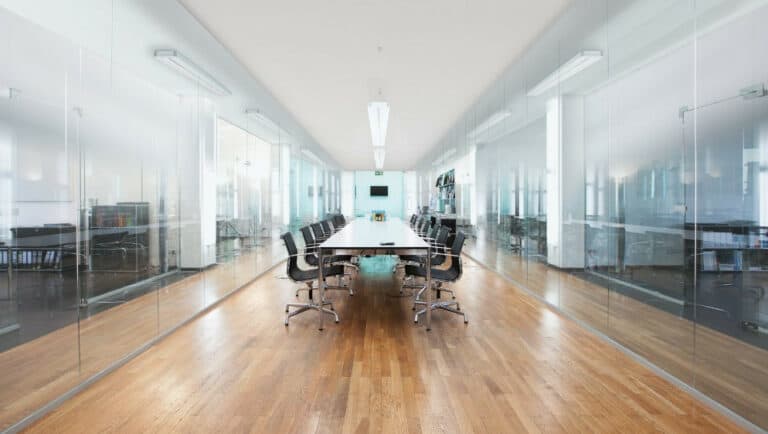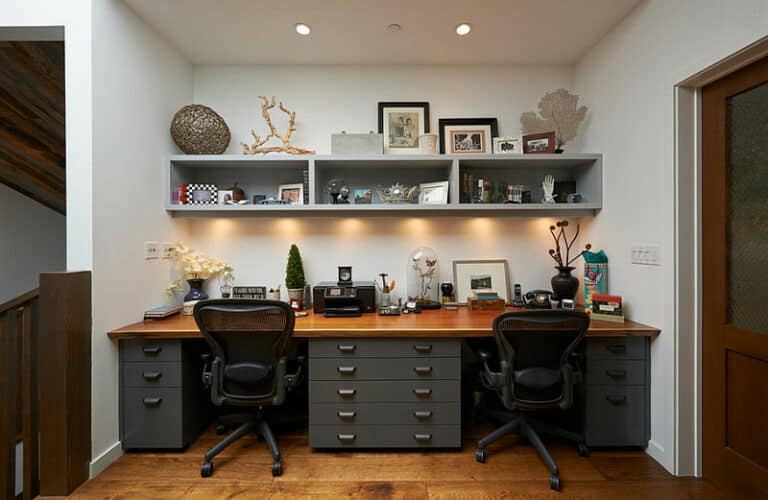5 Tips For Better Home Office Lighting
Introduction To 5 Tips For Better Home Office Lighting
Many people worldwide are forced to move their work to a completely different space due to the COVID-19 pandemic. From companies to universities, from language institutes to coaching courses, everyone has to convert their work office into a home office.
When people work from a home office, the characteristics of home office lighting in their workspace can notably affect their productivity. On another side, poor home office lighting can diminish your energy, dampen mood, cause headaches and eyestrain, and finally weaken your ability to work effectively.
The most useful way regarding productivity is related to people’s wellbeing. The work environment notably affects the productive state of mind. This declares the importance of the design of the workplace taking care of certain aspects, such as colour, materials, and layout. The most important element of a work environment that guarantees people’s wellbeing is lighting.
To make the light in your workplace benefit optimal performance, a balance needs to be found between two types of light: artificial and natural. Artificial home office lighting increases performance by improving concentration and alertness. It can also cause less pleasant effects too, like eyestrain and reduction of melatonin production in the evening.
On the other hand, natural home office lighting improves performance by reducing stress and increasing satisfaction. Researches proved that natural light has the most benefits for employees.
Considering the workspace illumination, artificial light is getting more important, as many offices would not have access to satisfying natural light. Overhead or recessed lights are in many home offices, but ambient lighting cannot be sufficient. This lighting is not designed for functional lighting in a home office, and adding extra resources is essential.
Since the rate of people who work from home is increasing due to the pandemic and also freelancing, which is getting more popular these days, as a result, people are spending more time indoors, and they are wondering how this could affect their well-being as well as work performance.
If you want to know how to increase your workplace light, you are in the right place. In this article, we provide you with five tips for better home office lighting.

1) Keep The Home Office Lighting Indirect
Working directly under the blinding light of overhead lights is a mistake. Look for ways to scatter the ambient light to illuminate your home office space. The lampshade is a good way to soften and diffuse otherwise unpleasant light. You need to illuminate the whole home office space without creating excessive glare and contrast while avoiding casting shadows.
2) Create Task Home Office Lighting
To do paperwork, computer work, and other focus-required tasks, select a well-defined light source devoted to what you are doing. An articulated or adjustable desk lamp is a great device that places the light exactly where you need it and helps you in various tasks.
If you have multiple desks in your home office for various tasks, for example, one desk for computer and phone work, one desk for filing, and a table for reviewing photos and layouts, establish dedicated task lighting for each desk.
Task home office lighting will ensure you perform your work under the best lighting conditions. This light source will concentrate on the task you are doing and easily see the finer details. Choosing to use an adjustable desk lamp enables you to fit the lighting angle to work in various setups easily.
Placing the task light behind the computer screen will scatter the screen's brightness and decrease the severity of light reflected onto your eyes.

3) Eliminate Shadows and Glare
Shadows and direct or indirect glare reduce lighting, cause difficulty in work, and diminish productivity. Glare normally comes from skylights, windows, and light from lamps. Here are some tips to eliminate shadows and glare:
- Change the place of your workstation.
- Change the place of the light source.
- Use lampshades to reflect light upwards because reflected light from the ceilings creates the best visibility.
- Mix direct and reflected light to use multiple light sources.
- Utilize a lamp with a movable stand and adjustable arm to change the direction of light easily.
- Supply lampshades which are white-coloured inside and black on the inside edges.
- To easily change the position of the lamp, use a magnetic lampstand with a clip.
- Construct windows and skylights on the side of the building that does not get too sunny to achieve equally lit working space
- Hang lamps high and utilize light sources with large surface areas like fluorescent lamps to achieve general lighting with less glare.
- To shade the building, you can provide curtains, blinds, louvres, trees, and vines.
- Use darker colour or matte paint for all surfaces, such as tables, tools, and machines.
- To reduce sharp shadows and glares and obtain optimum lighting conditions, combine daylight from skylights and windows with the ceiling and local lights.
- To shield intense light, which creates glare, you can install screens, covers, or partitions.
In addition to the above tips, always be attentive to where the light is coming from: if the light source is positioned in your back, it will almost certainly create an annoying glare on your monitor as you work on your computer. Likewise, watch accidental shadows cast by lamps set up for task lighting. For example, if you write with your right hand and the task light is also placed on the right, your hand and arm may cast shadows. Also, take care of the location of windows when establishing your workspaces.

4) Utilize Natural Home Office Lighting
Do not ignore the matchless benefit of natural light from a window, skylight, or another entrance. Sunlight can create warm lighting that enhances the work environment. On the other hand, you have to shade direct sunlight that creates an overwhelming glare during certain times.
A bright and airy workspace will motivate and support productivity and minimize postponement. If possible, let the natural flow of daylight flood into your workspace. Sunlight can produce warm home office lighting that promptly gets you in a good mood, developing a relaxed working environment.
Additionally, the natural shine of daylight enables you to absorb some vitamin D, keeping your bones strong and immune system healthy.
Through using blinds, shutters and positioning your desk or workstation in a north or south direction, you can control the natural light flow into your home office space that will help minimize shadows and glares from the sun.
5) Consider Decorative Home Office Lighting
As mentioned earlier, most home offices use ambient lighting scattered throughout the space and task lighting that focuses on specific workstations. Further to these two functional lighting types, you can add decorative and accent home office lighting to support your home office's visual character. Accent lighting, such as mantel or picture lights, attracts attention to objects or other elements in the room, while decorative lights, such as wall sconces, give direct visual appeal.
More Ways For Better Home Office Lighting
Change The Layout Of Your Furniture
When arranging the layout of your workspace, the most important aspect to consider is the balance between the natural light and the shadows it creates. You want to be sure that the place of your furniture facilitates the pertaining of as much natural light in the room as possible, and furniture can help this. Tall objects should be positioned away from the window, so they don't block the natural light.
Maybe you wish to put your desk near the window, where the most natural light is supplied. Position your desk perpendicular to the window to avoid the glare effect on your computer screen, especially during sunny times.
Balancing Natural And Artificial Home Office Lighting
In the summertime, we are sometimes getting up early due to the sunshine. When time moves toward winter, this sunshine becomes rarer, and, on most days, it is a challenge to receive much light. As a good start to the day is crucial in setting the mood for it the rest of the day, a helpful gesture is to turn on the lights when waking up.
Artificial light can significantly impact putting you in the right mood to have a productive day since they increase alertness. You also may wish to combine the two types of light during the day to optimize the effects, depending on the amount of natural light you have in your home office.
Balancing Two Types Of Artificial Home Office Lighting
It is crucial to invest in warm and cool light tones since they affect our moods differently. We need to consider the distinction between them when scheduling a day of work. When you need to be highly focused on your job, you might need to use cool tones, such as blue. It can be related to a certain time during the day as well.
Attention To Angles
Home office lighting deals with angles. Also, what kind of task you are doing in your home office defines how you use natural light. If you are a designer or an architect who works more on sheets of paper than technical devices, natural light will be delightful. Place your desk in the north or south directions so that natural light does not create a shadow during any time of the day.
The Right Ambient Light
If you do not receive plenty of natural light in your home office, then artificial lights become very important, as you will be using them even during the day. Overhead lighting forms are the main part of ambient lighting, and in many cases, people have recessed lights in their houses that help them in their work. People usually stick to their existing lighting, but they should know that this kind of home office lighting is not sufficient for work. The already existing ambient lighting was not designed to serve a home office. So, it would be best if you seek additional sources of illumination to add to the ambient light.

Use Light Bulbs For Your Home Office Lighting
Choosing the right light bulb is crucial when installing a new light fixture in your home office. Creating a good projection of lighting is important for workspaces. To stay concentrated, you need bright, cool lighting in your home office. Additionally, bright home office lighting makes you look like an expert in those Zoom meetings with the rest of the group.
Choosing warm to cool colour temperature bulbs with a dimmable feature is great. A dimmable light fixture can help modify lighting requirements and power during the day. A bulb in the range of 3000k to 5000k can give a quality amplification of light to your home office.
Maintenance of Lighting
Periodic maintenance is significant for productivity and cost savings. When lamps are dirty, they give off less brightness though they still consume the same amount of electricity. If lamps, windows, skylights, ceilings, walls, and work areas are maintained in good condition, you can enhance your home office lighting without increasing the number of fixtures or light bulbs. Researches have shown that in a dusty workplace, light coming from windows decreased 30-40% after three months and 45-55% after six months. So it is critical to:
- Clean all the essential components in the workplace at regular intervals.
- Change light bulbs and tubes that have weakened or are reduced in brightness.
- Position light bulbs that have reduced in brightness at another work area or desk where less light is needed.
- Use open-top type lamp shades to prevent dust from collecting on light bulbs and tubes
Conclusions
Nowadays, many people across the world are working in a home office. The quality of lighting in their home office can notably affect people’s productivity. Poor office lighting can diminish people’s energy, dampen their mood, cause headaches and eyestrain, and finally weaken your ability to work effectively.
To make the light in a home office benefit optimal performance, you will have to find a balance between artificial and natural light types. Artificial light increases performance by improving concentration and alertness. Natural light improves performance by reducing stress and increasing satisfaction while working.
Overhead lighting and recessed lights exist in most home offices, but people should be aware that these were not designed to work long hours, so additional light sources need to be established. Task home office lighting is a perfect way to guarantee the best lighting condition.
It would be best if you try to eliminate shadow and glare by placing your workstation in the right place. Use windows and skylight to supply pleasure daylight. To eliminate the unwanted glare, use curtains, blinds, and so on. Take care of keeping the lamp and windows clean and remove the dust regularly.
I trust you enjoyed this blog post about great home office lighting. Please stay tuned for more articles to come. Take care!
JeannetteZ
Your Opinion Is Important To Me
I would love to hear from you. Please leave me your questions, experiences, remarks, and/or suggestions on the 5 Tips For Better Home Office Lighting blog post in the comments section below. You can also reach me by email at Jeannette@WorkFromAnywhereInTheWorld.com.
You might also enjoy the following blog posts:
How To Set Up Your Home Office – 10 Easy Design Ideas
27 Ways To Create A Stylish Small Home Office
The Best Small Office Printer Scanner Copier
Proven Ways To Earn Money From Home





